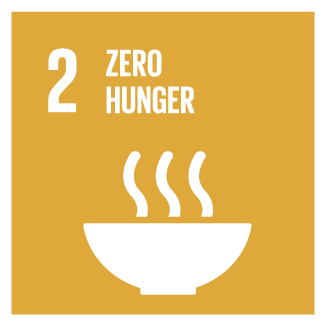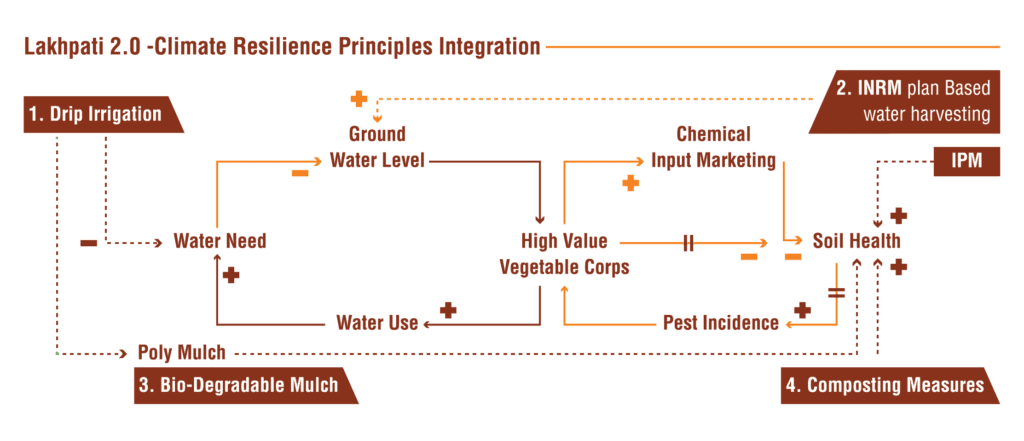Copyright @ CInI. 2025. All Rights Reserved5


Under LKP
Lakhpati
CInI’s “Mission 2020 – Lakhpati Kisan™ : Smart Villages” programme aims at making one lakh tribal families ‘lakhpati’ in an irreversible and sustainable manner with improved quality of life and life choices. At the end of the five-year period, all one lakh households under the livelihood programme will see a sharp increase in their annual income to Rs. 1,20,000 or more compared with their baseline earnings of around Rs. 35,000.
Unpredictable rainfall patterns, high production costs and meagre yields are some of the obstacles that create a constant cycle of debt for tribal farmers living in the Central Indian Tribal belt.
CInI’s Lakhpati Kisan Program (LKP) confronts these challenges through a multifaceted strategy that involves diversifying cropping practices, introducing high-value crops, and ensuring reliable irrigation.
LKP strives to enhance income of the farmers by supplementing agriculture-based livelihoods with high income-generating alternatives such as livestock and Non-Timber Forest Products (NTFP), in order to hedge risks and ensure secured income.
As a development organization working for farmers, CInI has also added a unique initiative Charkha to Market (Antaran) in South Odisha as a part of the livelihood theme. It is a handloom development programme that aims at arresting the drift of the younger generation of weavers from the handloom sector by creating entrepreneur-led microenterprises.
With a diligent focus on sustainability. Phase 2 aims to encompass 160,000 families, with 110,000 families continuing from the previous phase as integral community institution members.
Till date, over 49,000 families have achieved annual incomes exceeding INR 1,00,000.
Climate Resilience
Concentrated efforts have been made to address climatic challenges like erratic rainfall, rising temperatures, declining groundwater, and soil health. Developing climate resilience strategies has been a collaborative effort rooted in local ecosystems and enriched by community institution insights, to serve small and marginal families effectively.

Despite government efforts to popularize drip farming through different schemes, smallholders remain largely away from this innovative irrigation technology. These schemes aim to enhance water efficiency, particularly in agriculture, and support sustainable water resource management.
Lakhpati Kisan being the ambitious flagship program of CInI calls for promoting cash crops among smallholders for targeted income increase. Considering the labour constraint at smallholders’ level, the introduction of drip irrigation under the Lakhpati Kisan Program is a strategic response to the high labour demand and issues found in traditional irrigation practices by smallholders.
| State | Households | Total Area (acre) | Median Area per farmer (acre) |
|---|---|---|---|
| Jharkhand | 961 | 350.53 | 0.36 |
| Odisha | 738 | 190.24 | 0.25 |
| Gujarat | 623 | 532.02 | 0.85 |
| Maharashtra |
It started at a farmers’ event (Gen-Y agriculture Summit) in Keonjhar Odisha in 2016, where domain experts from Kerala Agriculture University (KAU) suggested promotion of drip farming among smallholders to solve their labour problem in managing cash crops. Drip irrigation was not in practice by smallholders at that time in CInI project areas as farmers were not aware of these techniques. With support from some reputed drip companies, CInI organized exposure visits for participant small farmers in Raipur Chhattisgarh. As the exposure was organized in farms of medium and large farmers, CInI had to put concerted efforts in convincing visiting farmers of the technology.
| Prototype | Farmers (number) | Area (Acre) | Avg Area per farmer (acre) | Project Grant (%) | Contribution (%) | Remarks |
|---|---|---|---|---|---|---|
| Shared Irrigation source | 5-12 | 1 - 4 acre | 0.2-0.5 | 70-80% | 20-30% | Preferably above 0.25 acres per farmer |
| Individual Irrigation source | 1 | 0.5-1 acre | 70-80% | 20-30% |
The adoption of this technology has been acknowledged for its substantial benefits in increasing crop productivity and labour savings for farmers in all CInI intervened regions. Moreover, the drip based farming system has also helped many women farmers to take farming independently without much support from the male members who are either engaged in other professions or not interested in farming.
The success in popularising drip irrigation among smallholders by CInI was a result of the collaborative efforts of all key stakeholders such as Drip Irrigation Companies, Government Departments and Farmers Collectives; with each playing crucial and complementary roles.

Making a sustainable difference in the quality of life of rural and tribal communities in the Central Indian tribal belt since 2007.
Copyright @ CInI. 2025. All Rights Reserved5